Matador Network's Blog, page 869
April 30, 2020
Greta Thunberg donates $100,000
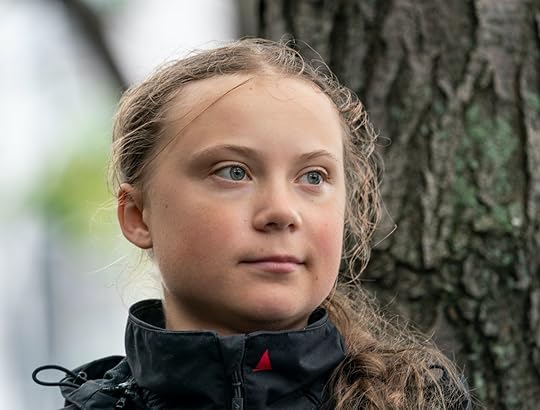
The news coverage may be more focused on the pandemic than the climate crisis these days, but that doesn’t mean that young climate activist Great Thunberg has given up the fight. Thunberg is now lending her support to children affected by the COVID-19 outbreak. She’s donating $100,000 to UNICEF, in an effort to protect young people from the dire consequences of the pandemic like loss of education, lack of healthcare, food shortage, and violence.
“Like the climate crisis,” Thunberg said in a statement, “the coronavirus pandemic is a child-rights crisis. It will affect all children, now and in the long-term, but vulnerable groups will be impacted the most. I’m asking everyone to step up and join me in support of UNICEF’s vital work to save children’s lives, to protect health and continue education.”
Although children and young adults aren’t affected as severely by the virus as the older population, children are among the pandemic’s biggest victims when it comes to socio-economic impact. Refugee children living in camps will be impacted the most.
Thunberg’s donation comes from the $100,000 prize money she was awarded by Human Act for her activism. Human Act is matching Thunberg’s donation to UNICEF, helping launch the campaign with a $200,000 contribution.
According to UNICEF, the donation will go directly toward the provision of soap, masks, gloves, hygiene kits, protective equipment, life-saving information, and other support to healthcare systems.
According to Henrietta Fore, executive director of UNICEF, “The coronavirus pandemic is the greatest struggle the world has seen in generations. Children and young people are among the most severely impacted by the knock-on effects of COVID-19, so it is only natural that they would want to do something about it. Through her activism, Greta Thunberg has proven that young people are ready to take a stand and lead change in the world. UNICEF is very pleased that Greta and her supporters have not only chosen to take a stand against this pandemic, but to do so in partnership with UNICEF.” 

More like this: 7 inspiring youth climate activists you should be following
The post Greta Thunberg donated $100,000 to help children affected by the pandemic appeared first on Matador Network.
April 29, 2020
Positive international LGBTQ news

It’s been a whacky couple of months. March went in like a lion and out like a Stranger Things Demogorgon, and although April still feels like we’re living in the middle of a dystopian novel, LGBTQuarantine has spawned something worth celebrating — international solidarity.
Whether it’s online Pride celebrations replacing canceled parades, the Lady Gaga stan who typed out the forthcoming Chromatica tracklist for the rest of us to enjoy, or the crowds of queer folks figuring out how to get laid in isolation, the coronavirus pandemic is bringing the LGBTQ community together in exciting new ways.
Here are 10 signs of queer solidarity from this past month that will make you smile.
1. Gert McMullin is making protective masks using leftover fabric from the AIDS Memorial Quilt.
In 1985, San Francisco native Cleve Jones gave birth to an idea that eventually became the AIDS Memorial Quilt — a visual celebration of those who lost their lives to AIDS. But Jones couldn’t sew and needed a capable tailor to make his idea a reality. That’s where Gert McMullin comes in. McMullin began sewing pieces for the quilt in 1987; she has since made around 130 panels and helped thousands of people construct their own. Today, the Memorial Quilt commemorates more than 105,000 individuals in over 50,000 three-by-six-foot quilt panels.
In April, the quilt was supposed to be displayed at San Francisco’s National AIDS Memorial after spending the past 18 years in Atlanta under the stewardship of the NAMES Project. While the coronavirus pandemic postponed those plans, it propelled McMullin into action.
McMullin, who has already sewn her way through one pandemic, began using leftover fabric from the AIDS Memorial Quilt to sew hundreds of masks for another. The recipients are essential workers and members of Bay Area Community Services, a nonprofit that serves locals with health and housing-related assistance.
“The fabric we were going to use for people who died is now going to be used for people, hopefully, to live,” McMullin told reporters at ABC News.
2. A gay nurse from Kansas relocated to NYC to help victims of the coronavirus.
View this post on InstagramA post shared by Dan Renzi (@d.renzi) on Apr 6, 2020 at 3:42am PDT
When New York City became the epicenter of the coronavirus pandemic in the US, Dan Renzi, a gay nurse from Kansas, relocated to help fight the outbreak. In a recent Instagram video, Renzi said, “If you told me that not too many years after I graduated that I’d be living in a hotel in New York while I was putting bodies in body bags because this mysterious fire was mowing down everybody’s grandparents … how do you process that?”
In April, Rachel Maddow praised his bravery on MSNBC before mentioning the “7:00 PM Clap” in New York — a jubilant citywide cheer honoring healthcare workers like Renzi. Most people around the world don’t get to see the impact their support has on healthcare workers, so she cut to a clip of Renzi processing the heartfelt applause in real-time. The video is an emotional celebration of our iron-willed community leaders and the queer people leading the charge.
3. A gay couple in Poland is fighting discrimination and disease with rainbow face masks.

Photo: Jakub & Dawid/YouTube
Living out and proud as an LGBTQ resident of Poland hasn’t been easy in recent years. The country’s ruling conservative party, which has been in power since 2015, opposes legal recognition for LGBTQ couples and same-sex adoptions. This past year, one-third of Polish municipalities declared themselves “LGBTQ-free zones,” promoting widespread discrimination against queer individuals.
“Many Polish people call us a plague,” Jakub Kwieciński, who lives in Poland with his husband, Dawid Mycek, recently told the Star Observer, “so we thought if we help people overcome real plague, they might change their mind.”
The Polish couple took to the streets in Gdańsk, Gdynia, and Sopot to give hundreds of citizens free face masks in the fight against COVID-19 infections, but with a queer twist — each mask was designed like a mini Pride flag.
The couple posted a video chronicling their noble public service on YouTube. It has since gone viral, proving that an infectious disease like discrimination stands no chance in the face of a guerrilla kindness campaign.
4. Virginia became the first state in the South to pass anti-discrimination laws.
On April 11, Governor Ralph Northam signed the Virginia Values Act, making Virginia the first state in the US South to pass anti-discrimination protections for the LGBTQ community. The law, which prohibits housing and employment discrimination based on sexual orientation and gender identity, will go into effect on July 1, 2020.
This new law isn’t Northam’s only considerable contribution to the queer community. In March, Northam signed bills outlawing conversion therapy for minors and requiring the Virginia Department of Motor Vehicles to offer a nonbinary option on drivers’ licenses.
Although Virginia is the 21st state in the US to pass an anti-discrimination law for queer constituents, it’s a tipping point for the largely conservative South and a hopeful sign of favorable change yet to come.
5. LGBTQ nightlife is taking to the net.

Photo:
IMHO with Chan & Dixie/Youtube
Gay bars around the world might be closed, but the internet is open for business, and queer nightlife lovers are making the most of it. A group of friends shacking up together in Westminster transformed their house into G-A-Y, their favorite queer club, to parody the pre-pandemic glory days. You can watch it on Twitter. In place of their weekly RuPaul’s Drag Race viewing party, Chicago’s Sidetrack bar is producing a series of YouTube videos where local queens review each episode. NYC’s favorite piano bar, Marie’s Crisis, is hosting musical theater sing-a-longs from a livestream via Facebook. The Balcony Club in Boise, Idaho, offers virtual yoga classes, burlesque shows, makeup competitions, and drag queen storytime for kids. For those looking for something a little more salacious, go-go boys from Club Cobra in Los Angeles now offer virtual lap dances via Only Fans. Who knew it was possible to stay home and still have a full social calendar?
6. Gay men’s choirs around the US are making heartwarming group videos.

Photo:
SFGMCVideo/Youtube
The San Francisco Gay Men’s Chorus recently honored health care workers and first responders with a mash-up of “True Colors” and “Brave” by Cyndi Lauper and Sara Bareilles. “You are our heroes” appears in typeface right before a diverse cross-section of San Francisco’s queer community starts blending in perfect harmony, which is basically your cue to start the waterworks at home. The video features a 150-person ensemble singing together virtually and is edited to look like an extended gay family reunion of the Brady Bunch.
If you’re digging the dulcet tones, check out the Boston Gay Men’s Chorus next. The choir, which canceled a concert for the first time in 38 years last month, released a song dedicated to those impacted by the pandemic. The video is a compilation of self-tapes made by choir members isolated throughout New England.
7. Pose star Indya Moore recently donated $20,000 to trans individuals struggling with financial instability.
Indya Moore, the nonbinary actress who stars in the FX television series Pose, promoted a campaign on their Instagram to raise money for trans and queer individuals in need of pandemic-related financial assistance. Moore raised over $20,000 through CashApp and has since distributed about $50 each to nearly 400 individuals. They’re also currently working with FX on a campaign called #FeedTheLove, which is raising awareness for families who don’t have access to nutritious food due to the pandemic. Moore, who survived a tumultuous childhood in the South Bronx and is now enjoying the glamorous side of a Cinderella story, knows a thing or two about hardship. Their willingness to use fame as a means of social advocacy is a lesson by which queer community could learn a thing or two.
8. Stonewall Gives Back! raised over $19,000 for the LGBTQ nightlife industry.

Photo:
WOWPresents/Youtube
Members of the LGBTQ nightlife industry have faced widespread unemployment due to the coronavirus pandemic, with many businesses wondering what their future holds. On April 23, World of Wonder Productions and The Stonewall Gives Back Initiative teamed up for a concert to raise money for those financially impacted. They will distribute the earnings as $1,000 grants to people who qualify. (If you’re an LGBTQ nightlife worker, you can apply for money by clicking here.)
The event — hosted by Michelle Visage and Tyler Oakley and featuring performances by people like Troye Sivan, Todrick Hall, Betty Who, and Alan Cumming — was a powerful reminder of what’s possible when the queer community comes together in support of one another.
9. You aren’t the only one screwing up your at-home haircut.

Photo: CNN/Youtube
It’s time to step away from the scissors and cut yourself some slack for your quarantine hairdo. When Jimmy Fallon asked professional hairdresser and queer icon Jonathan Van Ness for solo haircutting tips in isolation, Van Ness responded, “Just don’t do it.” Take his advice. Still, that doesn’t preclude you from enjoying some celebrity haircut schadenfreude. CNN anchor Anderson Cooper gave himself a bald spot, Teen Wolf heartthrob Colton Haynes buzzed himself a rat tail worthy of a Deliverance reboot, and Ricky Martin dyed his hair the color of an inedible red velvet cupcake.
If you already hit up the DIY hair salon, don’t worry — your luscious locks still have plenty of time to grow back before the world takes to the streets again.
10. A double rainbow appeared over the Manhattan skyline .
View this post on Instagram
‘Have A Good Trip' on Netflix
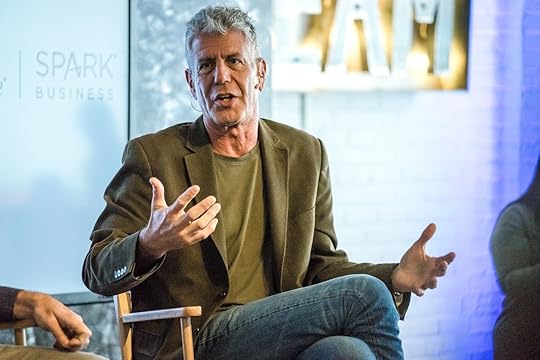
Although Anthony Bourdain and Carrie Fisher have passed, we haven’t seen the last of them. Netflix’s upcoming Have A Good Trip: Adventures in Psychedelics lists them both as celebrities with stories featured in the May 11 documentary.
The film centers on famous comedians, actors, and celebrities who share their stories about, as the name suggests, tripping on psychedelics. The stories will be told in part through reenactments and animated clips that call to mind the funny feelings fostered by an altered mental state. Have A Good Trip promises to look deeper — experientially, at least — than other recent mushroom-fueled cinema such as Fantastic Fungi. Yet while the potential medical merits of psychedelics are to be noted in the film, it’s the trip itself that takes center stage.
The documentary looks to be as wild as the personalities it features — a young Bourdain, actively obsessed with journalist Hunter S. Thompson, is portrayed by Adam DeVine, according to Uproxx. He’ll have a lot to work with: Bourdain was open in interviews about taking a lot (a lot) of LSD when he was young. Musicians Sting, A$AP Rocky, and Ad-Rock also speak their minds about psychedelic drug use in raw and revealing interviews. It looks as though most celebrities you’ve always suspected of having tried mushrooms or acid actually have, and many aren’t afraid to talk about it.
The timing of the documentary is appropriate. Psychedelics have spawned their way into the spotlight recently, as activists cite potential medicinal perks that have launched magic mushrooms down a similar path as cannabis — study, decriminalization, and if its supporters get their way, medical legalization or even a full-on societal embrace. Denver, which was one of the main cities that catapulted legal cannabis into the American mainstream in 2014, recently decriminalized psychedelic mushrooms. The active psychedelic substance in these mushrooms — psilocybin — is undergoing multiple clinical studies to understand its medical benefits. LSD and DMT are in similar studies to understand what, if any, psychiatric or medical benefits they may have on patients.
Have A Good Trip: Adventures in Psychedelics will be released May 11 and will stream on Netflix. 

More like this: Everything you need to know about doing magic mushrooms
The post Anthony Bourdain and Carrie Fisher feature in Netflix documentary on taking psychedelics appeared first on Matador Network.
Coronavirus treatment remdesivir

Since there’s currently no vaccine against COVID-19, our best short-term hope is the development of a treatment. An effective treatment would speed up recovery time and give coronavirus patients a better prognosis for survival. Today, the US National Institutes of Health (NIH) released preliminary results from a study testing an antiviral drug called remdesivir, developed by Gilead Sciences, and for once, the news is encouraging.
A recent remdesivir study took into account data from over 1,000 severely ill coronavirus patients, half of whom were given the drug while the other half were given a placebo. Test results showed that patients taking remdesivir recovered 31 percent faster than those taking the placebo. Although the fatality rate wasn’t dramatically affected, the results are still promising. 11.6 percent of patients on the placebo died compared to eight percent of patients taking remdesivir.
The success of this recent trial has catapulted remdesivir to the front of the coronavirus treatment race, with Dr. Anthony S. Fauci, the head of the NIH, expressing some much-needed optimism about its prospects. According to Fauci, the drug has proven that it can block the coronavirus.
Speaking to White House reporters, Fauci said the drug trial showed a “clear-cut positive effect in diminishing time to recover” and added that the trial has shown that “a drug can block this virus.”
Remdesivir is expected to undergo another trial, the results of which will be made available in late May. But in the meantime, the study’s results were so promising that the FDA is expected to issue emergency use authorization this week.
According to an FDA statement, “the agency has been engaged in sustained and ongoing discussions with Gilead Sciences regarding making remdesivir available to patients as quickly as possible, as appropriate.” 

More like this: These are the travel vaccines you actually need, according to an expedition doctor
The post Drug succeeds in human trials, fueling hopes for the world’s first COVID-19 treatment appeared first on Matador Network.
Zoom tribute to Dachau survivor

Abba Naor was treated to a special surprise Zoom call by band members of the Israeli Defense Forces and the US Navy today. On the call, the military musicians performed the Israeli national anthem for the 92-year-old Holocaust survivor, who spent four years in Dachau, a camp liberated exactly 75 years ago on April 29, 1945.
Naor, who at 17 was the youngest prisoner to be liberated from the camp, stands in honor of the anthem as the band begins to play. The video concludes with a salute to Naor from the members of both forces, returned in kind from the former prisoner.
US troops liberated Dachau on April 29, 1975, though Naor says he was not liberated until May 2 of that year after being forced to walk with other prisoners for days with no food or water.
Naor was born in Lithuania but moved to Israel in 1948, fighting in the country’s war for independence and eventually working for Israel’s national intelligence agency, Mossad, according to a report in NBC News.
“Actually, I have to thank you because you saved my life in 1945,” Naor says to the bands after the anthem concludes. “This is a day I will never forget.” April 29 also marks Israel’s Independence Day. 

More like this: Visiting a concentration camp is not just an excursion, it’s a lesson in humanity
The post US and Israeli military bands surprise 92-year-old Holocaust survivor with Zoom performance appeared first on Matador Network.
125,000 birthday cards for WWII vet

British World War II veteran Captain Tom Moore made headlines earlier this month for his impressive fundraising efforts. The 99-year-old walked laps around his garden to raise money for the United Kingdom’s National Health Service (NHS), raising more than $36 million and garnering global attention and affection in the process. Now, for his 100th birthday, people around the world are thanking Captain Moore with many, many birthday cards.

Photo: Bedford School/Facebook

Photo: Bedford School/Facebook
The Bedford School, near Captain Tom’s home in central England, has assumed responsibility for opening and displaying the more than 125,000 cards received. James Hodgson, its headmaster, said, “It’s the most amazing outpouring of love for a great man. We’ve had cards from all around the world, not just the UK … we’ve had cards from two year olds and we’ve had cards from 92 year olds.”

Photo: Bedford School/Facebook

Photo: Bedford School/Facebook
Hodgson is planning to display as many cards as possible and send Moore a photograph of the final result. The cards have already filled an entire hall, with more arriving every day.
Captain Tom is turning 100 years old on April 30, 2020. 

More like this: Guy Fieri is raising millions of dollars to give laid-off restaurant workers $500
The post WWII veteran receives over 125,000 birthday cards after raising $36 million for the UK’s health services appeared first on Matador Network.
Best pizza restaurants in Phoenix

Phoenix is a slice of pizza heaven. Yes, that Phoenix, the one where it’s nearly hot enough in the summer to cook said pizza on the sidewalk. While Chicago and New York were dueling it out for pizza supremacy, Phoenix was quietly building an army of pizza joints that could dethrone Naples. We’re talking true temples of dough, some stylish, some artisan, and some traditional. While there’s no “Phoenix-style” or even “Arizona-style” pizza, you can find places that have perfected just about every style out there, from deep dish to thin crust to true Neapolitan. There are nationally known and James Beard award-winning pizza makers, like Chris Bianco, and local legends who will soon be nationally known, like Myke Olsen.
The time for debate of whether or not Phoenix is a pizza city has come and passed. The only pizza question you should be asking yourself is where to eat first.
1. Pizzeria Bianco

Photo: Bianco/Facebook
Chris Bianco gets a lot of pizza props, and for good reason. Bianco is the godfather of Phoenix pizza. He’s praised by the likes of Bon Appétit, Vogue, Eater, Jamie Oliver, Jimmy Kimmel, and Oprah, to name a few. His pies have been named the best in the country by numerous publications, committees, and authority figures. Bianco’s secret at Pizzeria Bianco is simple: He uses only dough made with local wheat flour that’s naturally leavened to give the crust depth, chew, and a slightly nutty finish. The bread is topped with tomatoes from Bianco’s own line of 100 percent organic canned tomatoes and a carefully chosen cheese to match. On the Wiseguy, it’s house-smoked mozzarella alongside fennel sausage and roasted onions, while the Rosa has Parmigiano-Reggiano imported from Italy to complement the red onions, rosemary, and Arizona pistachios. Lines can be long, but the wait is worth it.
Where: 623 E Adams St, Phoenix, AZ 85004 and 4743 N 20th St, Phoenix, AZ 85016
2. Cibo Urban Pizzeria

Photo: Cibo Pizzeria/Facebook
At Cibo, pizza is elevated to special occasion food. The downtown oasis is housed in a restored 1913 bungalow with a picturesque patio that comes to life with twinkling lights at night. On any given night, there’s a good chance a nearby table will be celebrating a birthday or anniversary. Cibo has become such a cherished spot because chef-owner Guido Saccone puts the “upper” in crust. Wood-fired to puffy, charred perfection, the perimeter of each pie perfectly showcases the well-balanced middles, whether it’s a combo of Gorgonzola and spicy salami or sausage and mozzarella. Begin with antipasto and end with a shot of house-made limoncello for start-to-finish bliss.
Where: 603 N 5th Ave, Phoenix, AZ 85003
3. Pomo Pizzeria

Photo: PomoPizzeria/Facebook
You can’t talk about Pomo without talking about master chef Matteo Schiavone. He brings 30 years of experience cooking in Italy and a strict adherence to time-tested Italian ingredients and edicts to his certified Napoletana pizza. Pepperoni topper? Fuggedaboutit. But you will find pies like the Diavola, a San Marzano tomato and spicy soppressata slice that’s blast-cooked for 90 seconds at 950 degrees Fahrenheit in the hand-built oven. Or savor the simplicity of the Bufala Verace with fresh mozzarella, Parmigiano, basil, tomato sauce, and olive oil. Either way, the blistery crust is the perfect vehicle for wiping up the slightly soppy center. Don’t skip dessert, either. Pomo’s espresso-soaked, mascarpone layered, coco-dusted tiramisu is beyond dreamy.
Where: 705 N 1st St #120, Phoenix, AZ 85004
4. La Grande Orange

Photo: La Grande Orange Grocery and Pizzeria/Facebook
La Grande Orange, or “LGO” for people in the know, is pizza with personality. It’s located in a hip grocery-bakery-gelateria-pizzeria-gift shop that buzzes with a see-and-be-seen energy. But the star of the show here is pizza itself. The pies ooze charm and charisma with toppings like avocado, lemon zest, and broccolini alongside mainstays like sausage and margarita. So should you go for the veg-loaded Rocket Man or the meaty Gladiator? All of the pizzas come on the famous fermented dough, which is a sourdough so full of flavor and chewiness that there’s no wrong choice.
Where: 4410 N 40th St, Phoenix, AZ 85018
5. La Piazza PHX

Photo: La Piazza Phx/Facebook
If you ask owner Justin Piazza about deep-dish pizza, there’s a good chance he’ll say it’s sacrilege. La Piazza is all about Neapolitan pizza, and he has the official VPN certificate to prove it. That means the dough is made with high-protein flour and a double-fermentation, the sauce is built from San Marzano tomatoes, the fresh mozzarella is made in-house, and the toppings stick to the traditional like anchovies, capers, and prosciutto. It all goes into the hand-built domed brick oven, which can easily reach 1,000 degrees, and it comes out a crispy-chewy crust with pedigree. Get the Dolce Diavolo, a spicy-sweet blend of soppressata, Calabrian chiles, fresh basil, and a drizzle of Arizona honey.
Where: 1 N 1st St, Phoenix, AZ 85004
6. Spinato’s Pizzeria

Photo: Spinato’s Pizzeria/Facebook
The standout here is the sauce, which is a sweet, tomatoey temptress that’s remained a closely guarded family secret since the first Spinato’s opened in 1974 (there are now five locations). The most we know about the sauce is that it’s made with the finest ingredients, starting with tomatoes from a company in California. But the sauce is not all. Whether you “Get Meaty” with a sausage, beef, pepperoni, or bacon bonanza, or go veg with the Mamma’s Signature blend of fresh spinach, garlic, and tomato, cheese is laid on thick and comes out in a blistery blanket that bubbles almost to the edge, but leaves just the right amount of gloriously crispy crust.
Where: Multiple locations
7. Pizza A Metro

Photo: Pizza A Metro/Facebook
The digs may be small and nondescript — it’s a 20-seat slice joint in a strip mall next to a Circle K — but the pizza is mighty. The wood-fired pizzas at Pizza A Metro come in large, larger, and a gargantuan meter-long pie, which is 39 inches across, thus the moniker. Sure, trendy toppings like broccoli and arugula are on the menu, but this is a joint for the classics like meat lovers, meatball, and margherita. It’s a spot that serves as proof to not judge a pizza joint by its cover.
Where: 2336 W Thomas Rd, Phoenix, AZ 85015
8. The Parlor

Photo: The Parlor
Not your typical neighborhood pizza joint, The Parlor infuses style into each slice. Originally the site of a beauty salon, the mid-century modern building was renovated and refined into Phoenix’s most design-forward pizza digs, complete with swivel salon chairs. The wood-fired pies follow the same eye for aesthetics. Billowy, blistered crusts frame creative ingredients like grilled radicchio, sage, fig jam, sweet potato ricotta, and Calabrian chilies. Wash it down with sparkling rose or their lemony take on the Old Fashioned.
Where: 1916 E Camelback Rd, Phoenix, AZ 85016 

More like this: Phoenix has the best airport food in the United States, and it’s not even close
The post Phoenix, Arizona, is a sleeper pizza capital of the US appeared first on Matador Network.
Permit-free camping in the US

At $30+ a night, some campgrounds cost about as much as a cheap Airbnb — without the amenities of a warm bed and four non-nylon walls. These sites often run amok with humans, shrinking your hopes of having time well spent in the wild. And while this option totally works in a pinch, it’s probably not what you’ve been dreaming of.
But wild camping — or dispersed camping, or primitive camping, or whatever you want to call it — could be. There are plenty of places you can camp legally, permit-free, and often fee-free, in the US. If you know where to look, and you have the skills to play by the rules, these could be some of the most memorable nights of your life. Here’s how and where to do it.
Where to camp
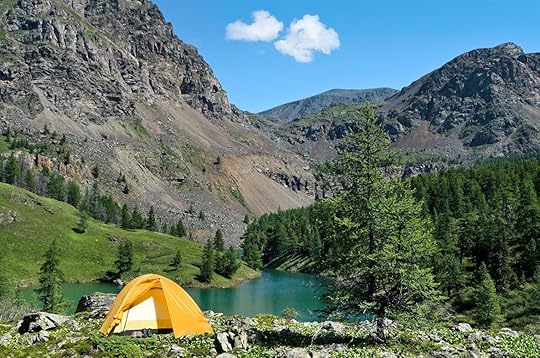
Photo: simoly/Shutterstock
When Horace Greeley said, “Go west, young man,” he didn’t realize he was talking to entire generations of campers. East of the Mississippi, land open to dispersed campers is considerably harder to find as much of the land is an urban mess that’s simply already claimed. Your best bet is the national forests in the Appalachians (shout out to Kentucky’s Daniel Boone National Forest) though smaller national forests can be found dotting the south, and national grasslands stretch through the country’s core.
West of the Mississippi, you’re almost spoiled for choice. Here’s the general rundown.
BLM land
You’ll find BLM (Bureau of Land Management) lands out West and, for all intents and purposes, only out West: The BLM manages 264 million surface acres west of the Mississippi and a mere 30,000 surface acres east.
These landscapes are usually wide-open, rocky, windswept, and often barren. That’s code for “no shade.” A general rule is that you can camp for 14 days on BLM lands though you should always call the nearest management office to double-check.
BLM territory can sometimes double as mining and grazing lands, so make sure you’re in an acceptable spot before you hunker down. In most situations, you can set up camp off an access road, hike into the territory, or at a pullout (looking at you, RVs). Just make sure you’re outside any developed campgrounds and no closer than 200 feet from a water source.
National forests and grasslands
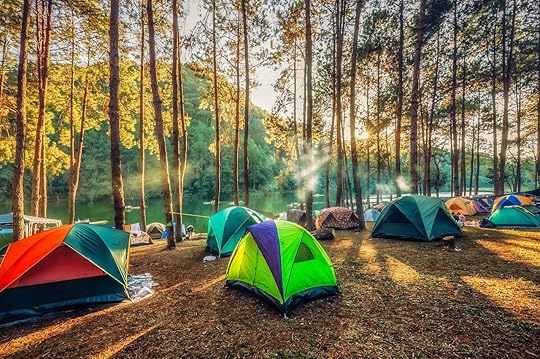
Photo: shutter_o/Shutterstock
Unless otherwise posted, America’s 154 national forests and 20 grasslands are good to go for dispersed camping. You can set up just about anywhere — pullout, forest service road, deep into the woods — as long as you’re not within designated campground territory or too close to water (again, 200 feet). These lands usually have a 14-day limit, give or take.
National forests can be particularly lucrative as they’re gorgeous, and sometimes at the boundaries of national parks, allowing you access to sought-after landscapes without the price tag and the crowds.
Note: The rules of each national forest or grassland may vary; call the appropriate office to find out about rules and restrictions.
National parks
The vast majority of national park campgrounds are riddled with humans, hard to get into without a reservation, and can be a bit pricey. There are, of course, exceptions: Many parks have more primitive campsites that are first-come, first-served, and the game completely changes in the off-season. While water may be turned off, the staff may be gone, and all amenities vanished, you may still be welcome.
Denali’s Riley Creek campground is a good example of this — once mid-September hits, Riley Creek’s water is turned off, the buses stop running far into the park, and camping becomes first-come, first-served, fee-free. Simply research the national park you’re visiting to see if this applies.
Urban “stealth” camping
Though you’d be hard-pressed to truly call it camping, there are plenty of places in the US where you can catch some Zs for the night in whatever your set-up is: namely, Wal-Mart, casinos, truck and rest stops. However, note that in many places local ordinances prevent sleeping overnight in a parked vehicle.
Note: Yep, there’s a website that tracks RV-friendly casinos and one that lists no-stay Walmarts.
A note on established Dispersed Camping Areas (DCAs)

Photo: welcomia/Shutterstock
In many national forests and along certain trails, you may find established DCAs, but don’t expect to fully know what that means until you do your research. In Michigan’s Hiawatha National Forest, for example, there are DCAs that require a reservation, some of which even have toilets. There, primitive camping is the term used for rolling up and plopping your tent on flat ground and communing with the stars.
Another example is Wisconsin’s Ice Age Trail, where DCAs pepper the route — most are just recognized people-camp-here areas, though some have things like drains and tents and cooking pads. Wherever you are, just do your research beforehand.
Before you go: know the rules
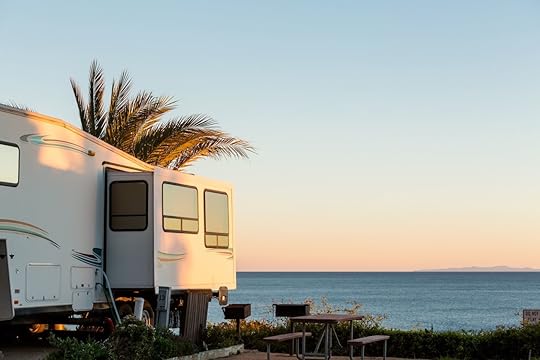
Photo: Arina P Habich/Shutterstock
Keep in mind that dispersed camping is not the same as camping at a designated campground — 99% of the time, there are no amenities. You’ll need to take care of your own trash, your own waste, your own everything. As for fire, only light one up in an existing ring or with your portable fire pit. Some areas may require fire permits while others may not allow them at all; always call the nearest office and check.
And then there’s the standard Leave No Trace principles. LNT.org sets the gold standard here, but here’s the gist:
Pack it in, pack it out.
Deposit solid human waste in six- to eight-inch deep catholes that are at least 200 feet away from water. Cover and disguise the cathole.
Split larger groups into four to six — groups of 75 or higher need permits.
Damage as little vegetation as possible. Choose clearer, durable areas and keep at least 200 feet from water sources.
Leave everything — everything — as you found it.
Let nature’s sounds prevail.
Helpful apps and websites
You don’t have to do your research the old-fashioned way. Here’s where to start looking:
Free Roam: This app (mobile and desktop) can be used for both national forest and BLM land; you can separate the layers if that’s helpful. Overlay the Motor Vehicle Use Maps to see what you’re dealing with in terms of getting there and around.
Publiclands.org: If you’re west of Nebraska, publiclands.org maps out all your options very clearly.
Campendium: On Campendium, you can type in whatever state you’re researching and sort for “free.” Of course, if you want to pay, you can filter for that too. There are reviews and all sorts of useful tools, as well.
The Forest Service: The USFS has a decent website with interactive maps, too. They make it simple to sort by activity.
Freecampsites.net: This website is populated by real live humans, so it’s not comprehensive — but it may clue you into off-the-grid spots your new favorite that Kevin found a few months ago.
Where should you go?
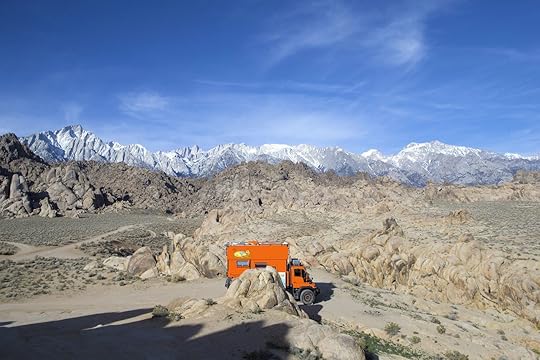
Photo: oksana.perkins/Shutterstock
Think you know all the country’s greatest landscapes? Think again:
Weminuche Wilderness: This is the largest wilderness area in Colorado, and it’s almost the size of Rhode Island. It’s part of the San Juan National Forest, has three fourteeners, and spans the Continental Divide. (The San Juan Skyway is a hell of a drive, too.)
Canyon Rims Recreation Area: South of Moab and not far from Canyonlands National Park, you can go far, far off-grid but so, so close to Utah’s most stunning landscapes. If you can, bring your mountain bike.
Oregon Badlands Wilderness Area: Managed by the BLM, yes, Oregon has volcanic badlands. Think of western junipers, roaming antelope, and unbelievably clear night skies.
These are just three spots amongst the millions and millions of acres open to you. Where will you go next? 

More like this: The best camping spots right inside major US cities
The post The ultimate guide to everywhere you can camp permit-free on US public lands appeared first on Matador Network.
Underrated African cities

While Instagram is rife with photos of travelers on top of Table Mountain in Cape Town, strolling about Morrocco’s blue city of Chefchaouen, or posing in front of the pyramids at Giza, the African continent is gigantic; there are so many options as far as experiences you can have besides just this small handful of touristy towns. A continent with so many diverse cultures and landscapes, Africa is home to many cities that prospective tourists should keep on their radar.
Whether you’ve never considered visiting deserts like the Kalahari or you didn’t know how cosmopolitan some African capitals are, there is a lot for tourists to enjoy on the continent that you may have never thought to explore. Whether you’re a newbie or just want to try somewhere new, here’s a list of vastly underrated African cities to keep in mind for your future travels.
1. Windhoek, Namibia
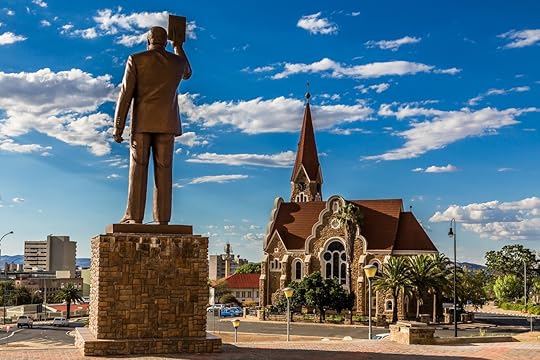
Photo: Vadim Nefedoff/Shutterstock
In the center of the southern African country of Namibia is its capital, Windhoek. A city on the rise, it has been increasing in both population and geographic size steadily since Namibia gained its independence in 1990. Under an aggressive plan proposed by its city council to expand the city’s borders to the north, Windhoek would become the third-largest city in the world by area, just behind Istanbul and Tianjin.
Because of its mining past, Windhoek has some unique museums, including the TransNamib Railway Museum and the National Earth Sciences Museum. But as far as exhibitions go, do not miss the Namibia Craft Center. Not only will you find rotating shows of local Namibian artists, but the complex also houses the shops of many different artists, ranging from gem cutters to woodcarvers.
Although Windhoek is a fantastic place to visit in and of itself, its position right in the center of the country gives visitors easy access to the rest of what Namibia has to offer. Just to the south is the Sossusvlei, a vast salt and clay pan surrounded by the famously Instagramable red-orange sand dunes of the Namib desert. To the west, you’ll find the Flamingo Lagoon at Walvis Bay, where on a good day you can find thousands of pink and white flamingos on display from a popular boardwalk.
2. Luxor, Egypt
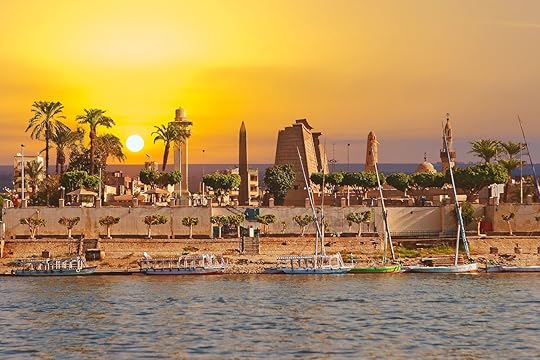
Photo: Mountains Hunter/Shutterstock
While many plan to do little more in Egypt than see the pyramids, those with a little more time will find up-river Luxor possibly even more enchanting. Located just across the Nile from the Valley of the Kings, Luxor still gets a considerable amount of tourists every year, though for those coming from Giza it may feel practically empty.
Set up like other ancient Egyptian cities that straddle the Nile, on the east bank, from where the sun rises, you’ll find hotels, museums, and residences. The west bank, where the sun sets, is largely reserved for the tombs of the Pharaohs to this day, though now you will find occasional conveniences and a tourist center.
Sixty-three tombs have been excavated here, most famously that of King Tutankhamun, which led to the greater archeological area being declared a World Heritage site. This also spurred the proliferation of the idea of “the curse of the pharaohs” that was said to haunt those who participated in the disturbance of the destruction of Egyptian tombs. Though largely a bit of superstitious fun, the curse and its many iterations still persist in pop culture today.
3. Durban, South Africa
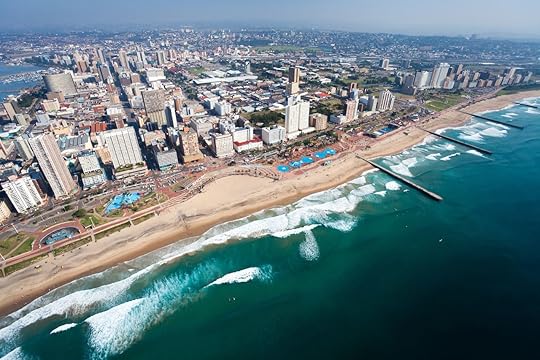
Photo: michaeljung/Shutterstock
When much of South Africa will fall prey to the grip of winter, Durban is literally nicknamed the “warm city” and has balmy weather all year. The famed Golden Mile beach and promenade are far less crowded than its Cape Town counterparts, and you will be able to find the perfect beach for any activity.
Families will love North Beach, known for its calm waters. Perfect for swimming and sandcastles, you’ll also find a variety of beachfront food options along the promenade. If you’re looking for surfing, try Addington Beach, where locals go to catch a wave. But for those looking for a dive, Treasure Beach is the place to go. Tucked away in a south suburb of Durban called Bluff, this beach is renowned for being the perfect place for underwater activities. During low tide, visitors who take the plunge will be able to find many different species of sea life, including butterflyfish and nudibranch. If you’re not familiar with identifying marine animals, The Wildlife and Environmental Society offers educational programs that include tours that are open to the public.
If you’re unsure what else Durban has to offer, BESETdurban has you completely covered. While not only being able to show you where to eat, drink and entertain yourself, BESETdurban’s walking tours clue you into the city’s history, as well, with a special focus on social justice. You can join one of their public tours for free — these occur approximately every four to six weeks — or you can schedule a private tour just for yourself or your group.
4. Ibadan, Nigeria
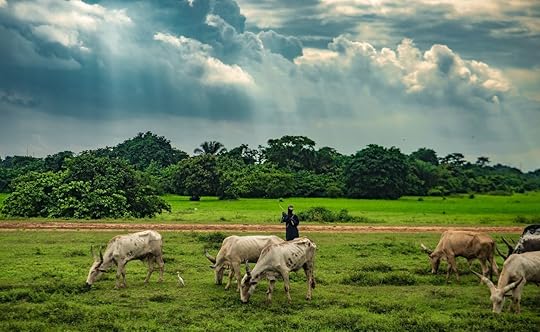
Photo: Alucardion/Shutterstock
A city in Nigeria’s Oyo State, Ibadan is a huge, sprawling city that houses to over three million people. Thankfully, one of the first things you’ll likely find when you arrive is Bower’s Tower. A remnant of Nigeria’s colonial past, the tower is located on the tallest hill in Ibadan, Oke-Are. The panoramic views from the top will help newcomers get a lay of the land.
Once the most populous cities in all of sub-Saharan Africa, Ibadan has some of the oldest and most massive markets on the continent. Though possibly most famous for its textile salespeople, Ibadan’s oldest market, Oje, has been around for over 100 years. While you’ll find different varieties of Yoruba fabric here, you’ll notice a great number of herbalists, too. Along with other natural remedies, you’ll find them selling Nigeria’s famous black soap, said to treat everything from acne and eczema to fever.
If you’re most excited about Ibadan’s markets, you may want to plan on spending at least a couple of weeks in town, as most of the city’s historic markets aren’t open every day, and many of them don’t follow a very traditional schedule. Oje, for example, is open once every 10 days, meaning it’s neither open on the same day of the week nor the same date from month to month. Every market in town has its own schedule and is usually opened once every seven to 14 days.
5. Mombasa, Kenya
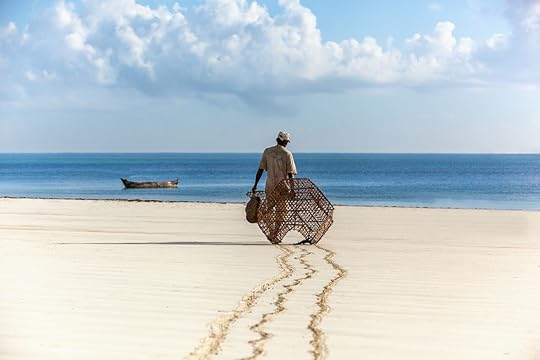
Photo: Photosite/Shutterstock
Mombasa is Kenya’s oldest city and has historically been central to trade in the region. Because it is located so strategically, it has been controlled by many different regimes over hundreds of years, and you can see these influences in Mombasa today; its mix of African, Middle Eastern, and Indian cultures reflect its multicultural and unfortunate colonial history.
Located on the Indian Ocean, Mombasa’s beaches are phenomenal. You’ll have many spots to choose from, but Diani Beach — like the Ipanema of Kenya — is the most popular. While loungers and sunbathers will fare just fine here, those who prefer a little more adventure will feel equally at home as visitors can go kitesurfing, jet skiing, and snorkeling in the nearby coral reef.
While Mombasa is largely safe, visitors to the area must be particularly wary of theft as it is extremely common. But unlike in some other countries, the perpetrators there are mostly monkeys — baboons, vervet, and colobus monkeys in particular — which are known to steal food and anything else that interests them from hotel rooms or even directly from people themselves. While you’re in town, remain extra vigilant about closing doors and windows when you leave for the day lest you return to find all of your food missing and your belongings in disarray.
6. Djibouti City, Djibouti
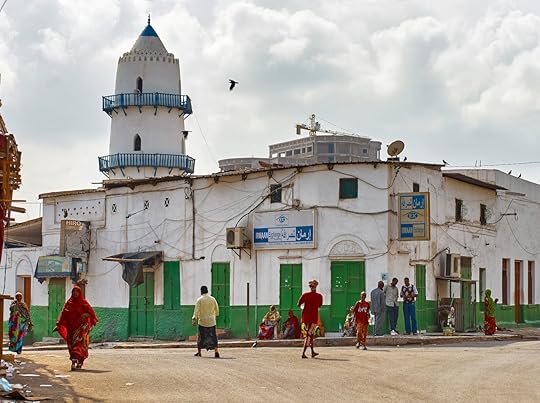
Photo: Truba7113/Shutterstock
Called the “French Hong Kong in the Red Sea,” Djibouti’s capital contains a multitude of cultural influences. Hundreds of years of trade, immigration, and colonialism have informed their traditions, especially the food. Visitors to Djibouti will find Somali and Yemeni specialties alongside French standards, as well as a huge variety of fusion restaurants.
While French-Ethiopian fusion may be most common, you can easily find Vietnamese, Chinese, Italian, and Arabic food, as well as combinations of these. If you’re not sure where to start, The Melting Pot takes fusion to the next level. Here you’ll find everything from skewers of dromedary (camel) to steak arroser, but one night a month you can enjoy your French and Djiboutian standards alongside all-you-can-eat sushi.
If you prefer to prepare your own meals, you can grab your supplies at the Central Market in the African Quarter. Here you’ll find the normal trappings of fresh produce and fish, as well as handicrafts, textiles, and spices.
7. Kigali, Rwanda
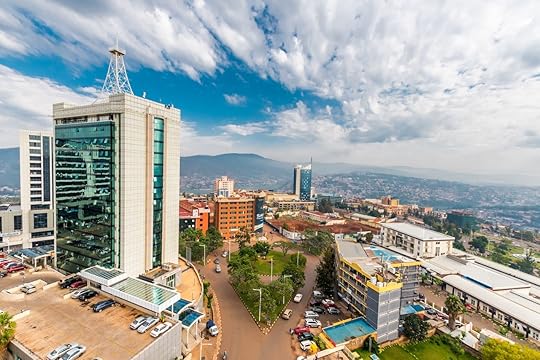
Photo: Jennifer Sophie/Shutterstock
Rwanda’s unique ecosystem makes it one of the last remaining places to see mountain gorillas, which brings a lot of people to its capital, Kigali. But should you be passing through, set aside a few days to explore this exceedingly clean and verdant jewel of a city that has blossomed out of the tragedy of the Tutsi genocide in 1994, the memorial for which you’ll find in the center of town.
There is excellent and ample shopping in Kigali, especially in the Nyamirambo neighborhood, where you’ll find a particularly eclectic mix of shops, bars, and restaurants. Though it is primarily a Muslim neighborhood, it’s not isolated from the rest of the city at all — though most of the food you’ll find here will be halal, you’ll still find a handful of bars around if you care for a sundowner. Or, for a perfect view for sunset, you can hike to the top of Mt. Kigali from Nyamirambo. The hike up isn’t too strenuous and can be tackled by many.
Those looking for a less athletic way to experience the culture of Kigali should definitely take some time to see the Inema Art Center. Much more than just a home for artworks, Inema hosts artists in residence, as well as runs arts programs that enrich the community. One of these such “creativity programs” trains Rwandan women to become artmakers and hand-crafters. The women involved in this program, called Inzia Crafts, participate in beading, leatherwork, and other handwork projects.
8. Timbuktu, Mali

Photo: Sebastia Bass/Shutterstock
First of all, Timbuktu is, indeed, a real place. Situated just north of the Niger River in northern Sahara, Timbuktu was once an important trade post among Tuareg trading routes across the desert. Though once nicknamed the City of Gold by the French when they first arrived, today it lays impoverished and desertified, partially because of the dip in revenue from tourism.
From 2008-2013, Timbuktu was the unfortunate victim of a series of attacks and occupations by different extremist Islamic groups, but even though the threat is largely gone, it hasn’t disappeared completely, and the journey there is an arduous one and definitely not for those who are new to desert travel or are on a strict schedule. No commercial flights exist that fly there today, so your only options are to travel by boat along the Niger river, renting a 4×4 and driving there, or, the safest option, which is to hitch a ride with an NGO that has chartered a plane to fly there. Most people choose to skip the overland journey as it is keenly possible to run into police checkpoints, a lingering insurgent, or literal land mines, though securing a spot on a plane is extremely difficult for those unconnected.
If you can somehow surmount these very real obstacles and make it to Timbuktu yourself, you’ll find the incredible, 700-year-old Djinguereber Mosque, which was built by Mansa Musa after he was inspired by a famously extravagant trip to Mecca in that began in 1324. Though he was assassinated at some point within the next few years, The Djinguereber, or Great Mosque, and his royal palace still stand as a testament to his incredibly successful and peaceful reign, which was most notably focused on scholarship, the arts, and Islamic faith of which Mansa Musa was so fond.
Even more impressive than the royal residence might be the Ahmed Baba Institute of Higher Islamic Studies and Research, which houses the single greatest collection of Islamic and African literature in the world. Many of the manuscripts housed here date from the 13th and 14th centuries and have been oh-so-carefully preserved, saved, hidden, and kept — sometimes under threat of death — since then. Though many volumes were lost in the last 20 years to the callous activity of insurgents, what is left, still a massive collection, is so important as a piece of our collective intellectual inheritance that those who are charged with the task are willing to fight to protect it. 

More like this: 7 perfect cities for black travelers in 2020
The post 8 underrated cities in Africa that every traveler would fall in love with appeared first on Matador Network.
Beach sprayed with bleach in Spain
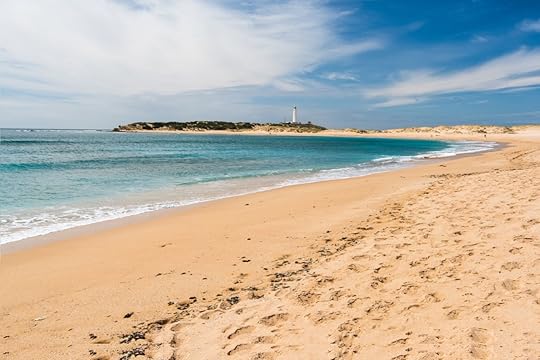
Any considering heeding President Trump’s advice to inject household disinfectant as a counter-maneuver to the coronavirus need only look to Spain for an example of why one should not pour bleach willy-nilly in ill attempts to fight COVID-19.
The country is facing intense backlash after reports that local officials sprayed bleach across 1.2 miles of coastal beach near the town of Zahara de los Atunes on its southern coast. This was done in an attempt to sanitize the area for children and families, who are allowed to visit beaches and other public spaces for the first time since early March. The move resulted in the devastation of the beach’s ecosystem, killing insects and migratory birds who nest in the nearby dunes.
“Bleach is used as a very powerful disinfectant, it is logical that it be used to disinfect streets and asphalt, but here the damage has been brutal,” said local environmentalist María Dolores Iglesias, as reported by the BBC. “They have devastated the dune spaces and gone against all the rules. It has been an aberration what they have done, also taking into account that the virus lives in people not on the beach. It is crazy.”
The environmental organization Greenpeace in Spain also condemned the action, comparing it to the recent comments made by Trump, tweeting, “Fumigating beaches in the middle of the breeding season for birds or the development of the invertebrate network that will support coastal fishing… is not one of Trump’s ideas. It is happening in Zahara de los Atunes.”
Spain’s regional Andalucian government has discussed fining local authorities for the decision. The government of Zahara de los Atunes has since apologized for the move, stating that it was done with good intentions to keep the beach area safe for families but failed to consider the environmental impact. 

More like this: Despite drop in air pollution, 2020 still on track to be hottest year on record
The post Spanish town faces intense backlash after spraying beach with bleach appeared first on Matador Network.
Matador Network's Blog
- Matador Network's profile
- 6 followers



